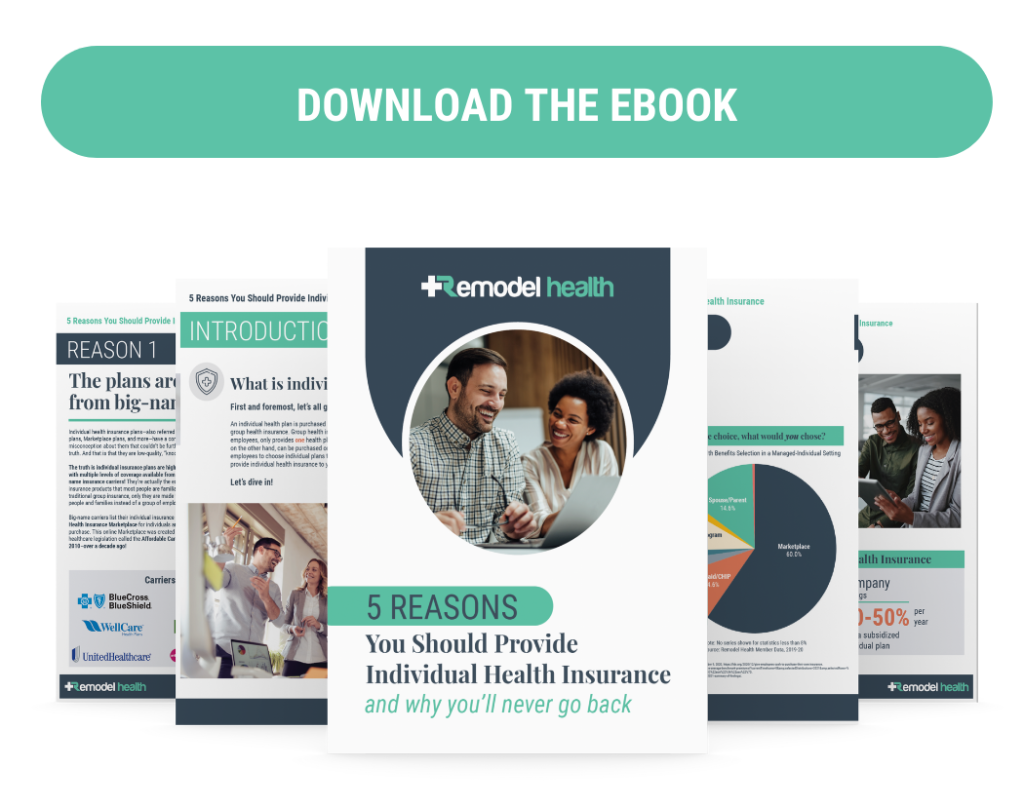Small business owners need to reduce their bottom line. But too often with healthcare, they feel stuck.
You’ve probably felt it yourself—health benefits have been a steep expense for small businesses for a long time now. And it’s only gotten worse over time. Over the past 10 years, the average renewal has increased 5-7% every year. This means that small business owners are paying double what they did a decade ago for health insurance.
Not only have small business health benefit costs doubled over the past decade, plans have actually gotten worse with time. In fact, deductibles have increased by 212%+. As any small business owner knows, paying more and getting less is just bad business.
After such a difficult 2020, something needs to give in order for small businesses to thrive again.
Here’s the good news: relief is finally here! Small business owners can now save around $6,000 per employee per year when they apply these top 2 ways to cut costs on small business health benefits.
1. Switch from Group to Individual Plans
The first way to cut costs on small business health benefits is switching from your group plan to individual plans.
Having all employees pay full price for a product that has been chosen based on group needs is not cost effective for anyone. When you opt for this traditional route, half your employees pay for something they don’t need (or use) and the other half aren’t getting the coverage they need for what they pay.
Thankfully, there’s a better, more economic way to provide coverage for your employees! Instead of administering traditional health benefits, small business owners are giving employees a wage increase to purchase individual plans.
It’s a similar concept to the shift away from pensions over to 401(k) retirement benefits that took place in the 80s. Instead of the employer managing the group product and absorbing tons of the risk and responsibility, they instead moved personal ownership to the employees. Employees would get a contribution from the employer as a budget to invest however they would like; i.e. moving away from a group benefit and toward an individual benefit.
But it gets better! Individual plans have discounts (called subsidies) which lower on the price of your team’s health plans—for both you and your employees!
Individual plans are discounted by tax credits which limit how much individuals have to pay on healthcare costs. The more expensive the plan, the bigger the tax credit discount. Which means the cost of individual insurance stays more stable than traditional group plans.
Thanks to the new American Rescue Plan, these discounts have actually doubled, and even more discounts are available to people who did not qualify before. As a result, small business owners can finally cut costs and gain control over their health benefits.

2. Opt for HSAs instead of Copays
The second way to cut costs on small business health benefits is by opting for an HSA instead of a Copay.
Health Savings Accounts—also known as HSAs—have some of the very best benefits in the business. But they get a bad rap because the only way to qualify for them is with a High Deductible Health Plan—also known as an HDHP.
Here are some important principles to keep in mind about copays vs. HSAs:
- Copay plans cost way more
- Copay plans have higher out-of-pocket limits
- HSA plans cost way less
- HSA plans have lower out-of pocket limits
High Deductible Health Plans are consumer-driven plans that put individuals in the driver’s and keep them from overspending on an underutilized plan.
Only 3-5% of people actually hit their out-of-pocket limit every year. Additionally, the average person in the U.S. will only go to the doctor about 2-3 times per year (even less now that Telehealth has increased in prevalence). So if copay plans cost way more than HSA plans and have a higher max out of pocket, why would we spend more than we need to and take on higher risk for something we hardly even use?
Enter the HSA. If you’d like to learn more about how HSAs and HDHPs work, check out this article.
For now, let’s look at tips for using your HSA well:
- Save money every month on the cheaper HDHP plan
- Take that money and save it in the Health Saving Account (HSA)
- Let that money build-up and rollover year over year
In about 3 years, you could save enough to fully cover your out-of-pocket limit while still saving money each month with an HSA.
Let’s say that a family saves up $5,000 a year in their HSA over the course of 12 years. Even if they spent $20,000 on medical costs, this family would still have saved $50,000 in savings! Not only can they be used for any eligible IRS Section 213 medical expenses, they can even be used for things like braces, or even retirement.
Your next step to cutting costs on health benefits starts now…
Small businesses have options when it comes to their health benefits! You don’t have to keep doing the same thing you’ve always done.
If you’re a small business owner, Remodel Health is the best way to control costs while not cutting coverages. Connect with our team of licensed consultants today for your full evaluation and start spending less while actually getting more for your team.

Important Notice: Remodel Health does not intend to provide specific insurance, legal, or tax advice. Remodel Health always recommends to consult with your own professional representation to properly evaluate the information presented and its appropriate application to your particular situation.
